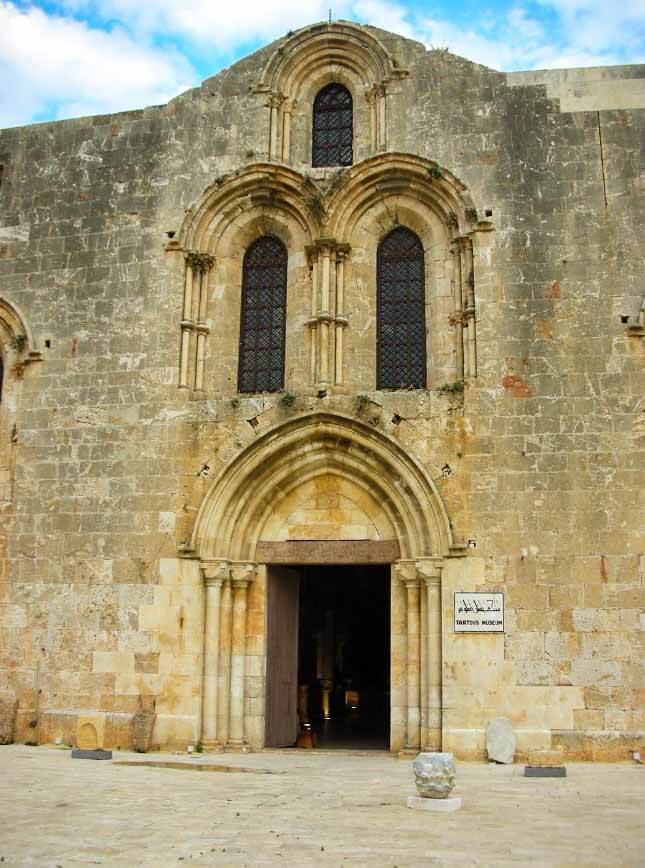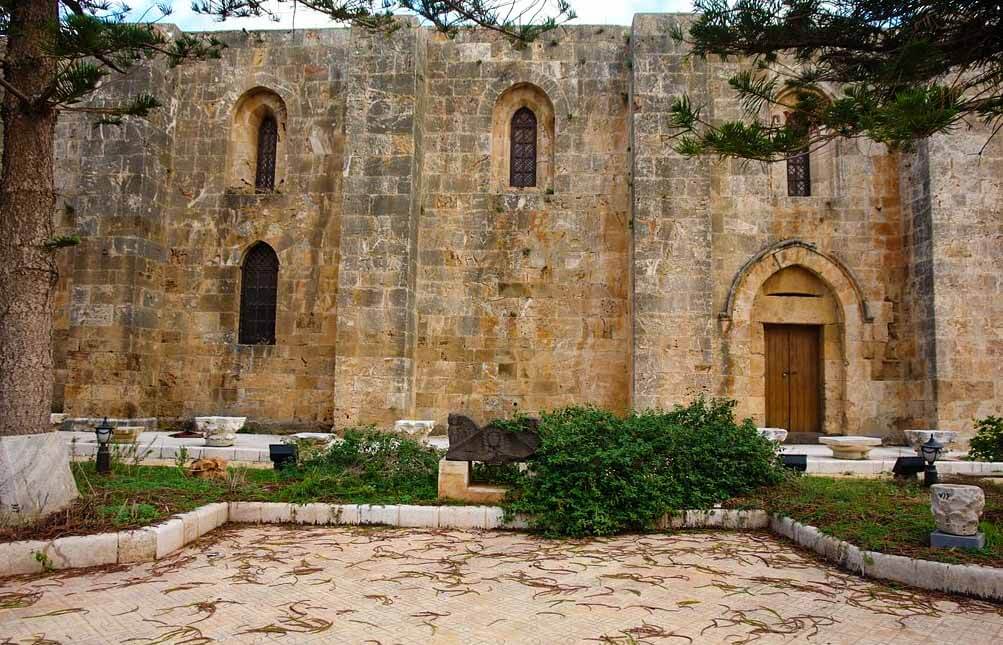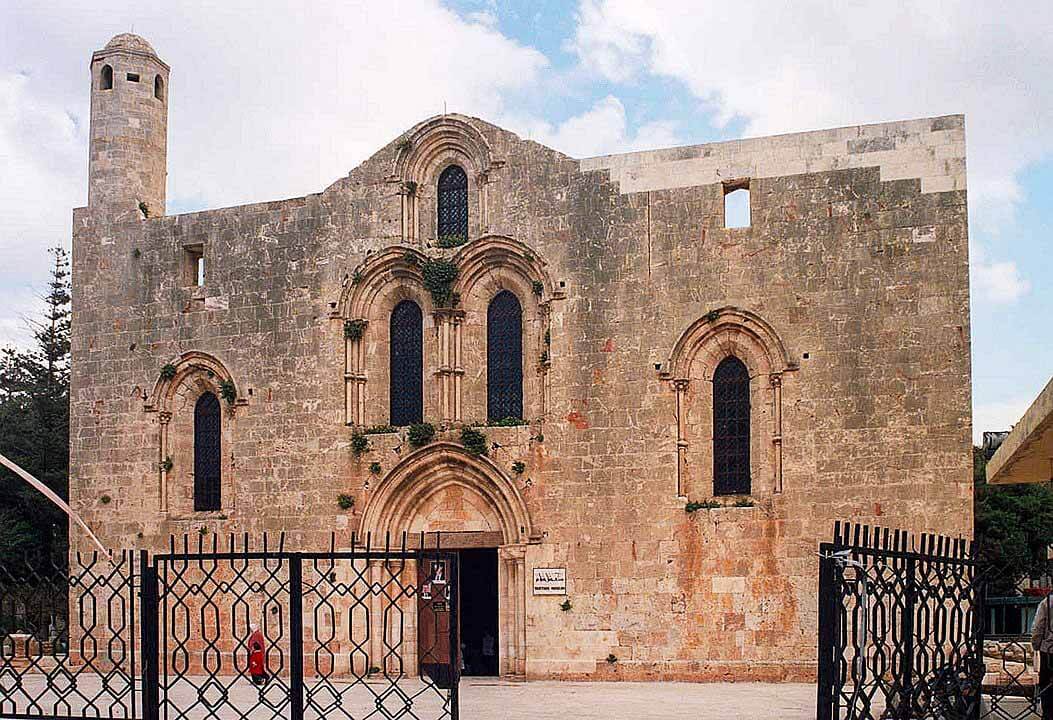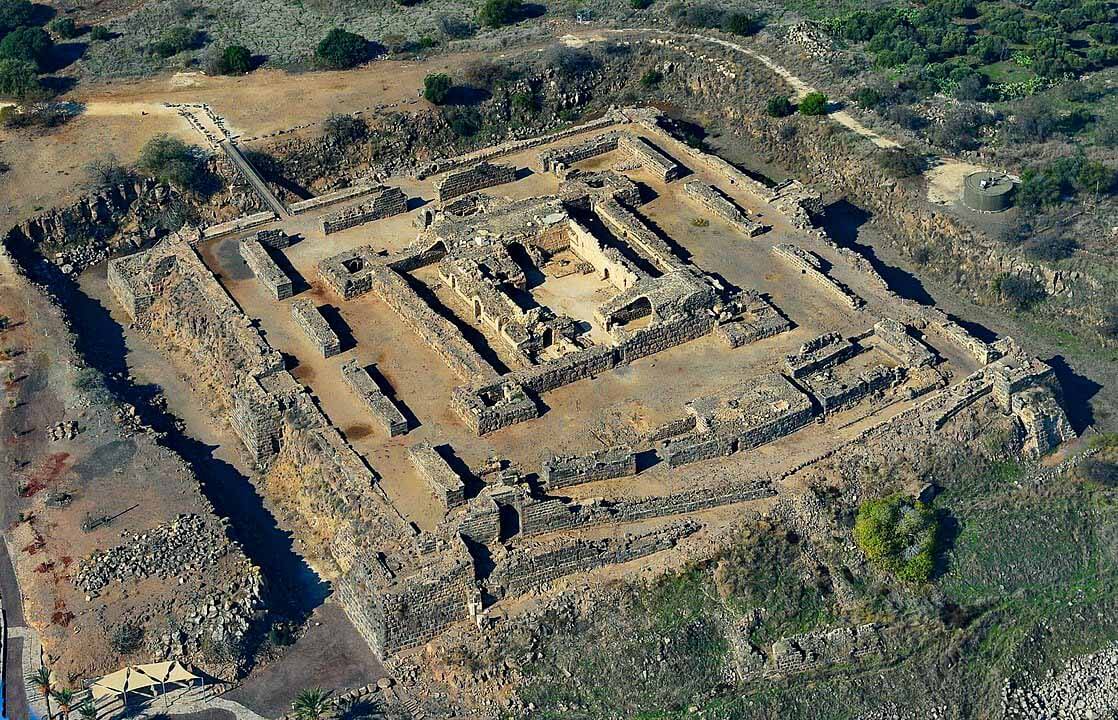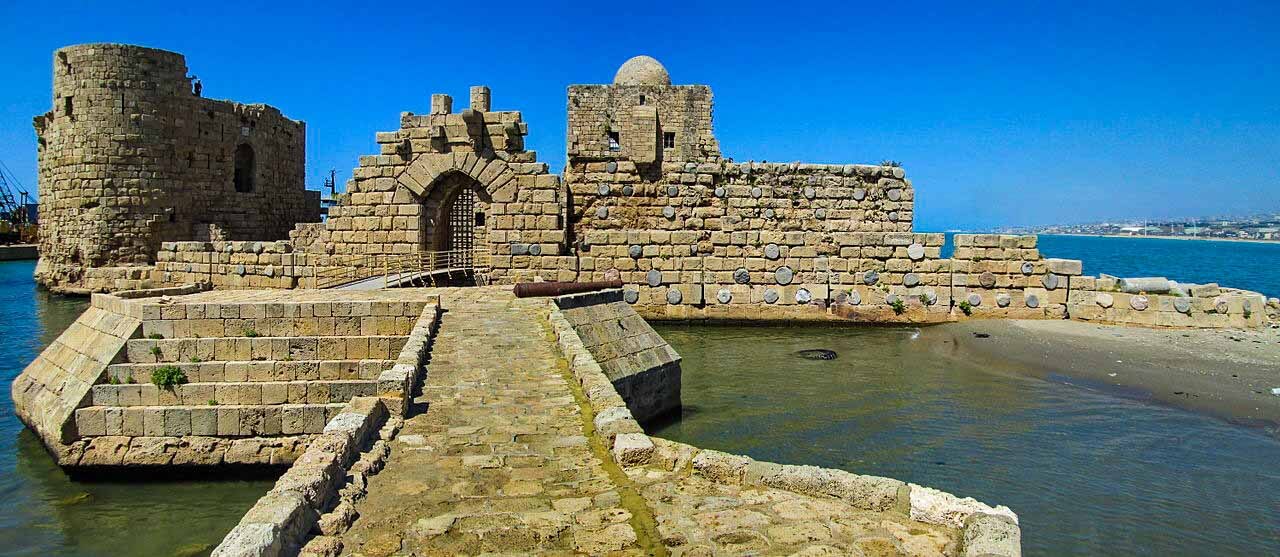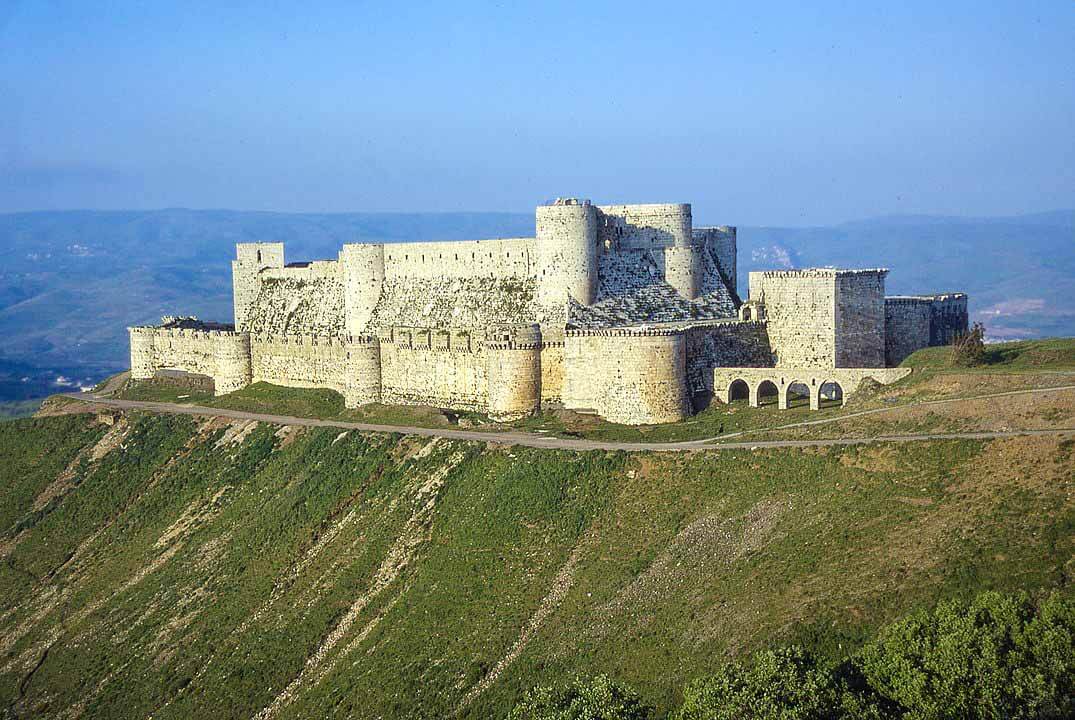Tartus, Syria
Coordinates: 34.891667, 35.877778
Cathedral of Our Lady of Tortosa was a Catholic cathedral in the city of Tartus, Syria, erected during the 12th century. It has been described by historians as “the best-preserved religious structure of the crusades”.
According to a legend, the place corresponds to where Hz. Peter رضي الله عنه founded a small church.
After capture by the Mamluks, the cathedral was turned into a mosque. Today, the building serves as the National Museum of Tartus.
History
Hz. Peter رضي الله عنه, commissioned by Hz. Isa عليه اسلام to build his Church (Matthew 16:18, John 21:15-17), founded a small church in Tortosa in honor of the Hz. Bibi Maryan رضي الله عنها on his travels through Phoenicia.
The cathedral was erected on that site for Byzantine pilgrimages. It was built initially in Romanesque style and then gothic style during the 12th century.
From 1152 under mid-13th century, the Knights Templars governed the area. Since the town was repeatedly threatened by the Mamluks, the church building was fortified.
Tartus was allegedly the last holdings of the Knights Templars in the Near East. After capture, the cathedral was turned into a mosque.
Since 1956, the prior church building has housed the National Museum of Tartus (the Tartus Museum), which exhibits some archaeological objects.
Note: Some of the information in this article is from the Christian Historians.



